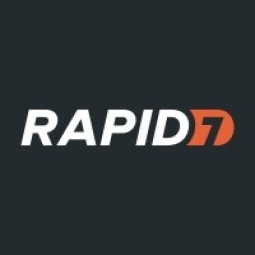Enhancing Cybersecurity in Healthcare: A Case Study of The Royal Orthopaedic Hospital and Rapid7 Partnership

Technology Category
- Analytics & Modeling - Real Time Analytics
- Sensors - Temperature Sensors
Applicable Industries
- Healthcare & Hospitals
- National Security & Defense
Applicable Functions
- Procurement
Use Cases
- Cybersecurity
- Tamper Detection
Services
- Cybersecurity Services
About The Customer
The Royal Orthopaedic Hospital, located in Birmingham, England, has been a pioneer in orthopedic care since 1877. It is one of the largest specialist orthopedic centers in Europe, serving patients from the U.K., Europe, and around the world. The hospital operates on a single campus with two on-site data centers and 250 virtual servers. The hospital's IT department, consisting of 20 members, is responsible for managing cybersecurity, ensuring the protection of patient and healthcare records, and the IT infrastructure from potential cyber threats. The department operates around the clock, seven days a week, to maintain the critical networks.
The Challenge
The Royal Orthopaedic Hospital in Birmingham, England, one of the largest specialist orthopedic centers in Europe, faced significant cybersecurity challenges. The hospital's IT department, led by Ray Mian and Ajmal Khan, was tasked with protecting patient and healthcare records and the IT infrastructure from ransomware attacks. The stakes were high, as any system downtime could have drastic consequences in the hospital environment. A significant challenge was the lack of visibility in the environment. The team was unable to identify their assets and lacked the necessary tools for visibility, discovery, and analysis to assess their security posture within the organization. This lack of visibility was identified as a key weakness in their cybersecurity strategy.
The Solution
To address these challenges, The Royal Orthopaedic Hospital implemented Rapid7's InsightVM, InsightIDR, and InsightConnect solutions. These products were chosen for their ease of deployment, automation capabilities, and cloud-based operation, which were ideal for the hospital's small security team. The solutions provided real-time visibility into the hospital's environment, allowing the team to scan all assets and identify discrepancies between expected and actual results. The hospital deployed Rapid7 Insight Agents on all end-user devices to maintain visibility even when devices left the hospital environment. InsightVM enabled the team to scan all subnets in their infrastructure, prioritize patching and remediation, and provide richer information regarding risk. InsightIDR was integrated with about 10 systems as event sources, providing log aggregation, user behavior analysis, and threat intelligence. The team also worked on automating their incident response using InsightConnect, Rapid7’s Security Orchestration Automation and Response (SOAR) solution.
Operational Impact

Case Study missing?
Start adding your own!
Register with your work email and create a new case study profile for your business.
Related Case Studies.

Case Study
Hospital Inventory Management
The hospital supply chain team is responsible for ensuring that the right medical supplies are readily available to clinicians when and where needed, and to do so in the most efficient manner possible. However, many of the systems and processes in use at the cancer center for supply chain management were not best suited to support these goals. Barcoding technology, a commonly used method for inventory management of medical supplies, is labor intensive, time consuming, does not provide real-time visibility into inventory levels and can be prone to error. Consequently, the lack of accurate and real-time visibility into inventory levels across multiple supply rooms in multiple hospital facilities creates additional inefficiency in the system causing over-ordering, hoarding, and wasted supplies. Other sources of waste and cost were also identified as candidates for improvement. Existing systems and processes did not provide adequate security for high-cost inventory within the hospital, which was another driver of cost. A lack of visibility into expiration dates for supplies resulted in supplies being wasted due to past expiry dates. Storage of supplies was also a key consideration given the location of the cancer center’s facilities in a dense urban setting, where space is always at a premium. In order to address the challenges outlined above, the hospital sought a solution that would provide real-time inventory information with high levels of accuracy, reduce the level of manual effort required and enable data driven decision making to ensure that the right supplies were readily available to clinicians in the right location at the right time.

Case Study
Gas Pipeline Monitoring System for Hospitals
This system integrator focuses on providing centralized gas pipeline monitoring systems for hospitals. The service they provide makes it possible for hospitals to reduce both maintenance and labor costs. Since hospitals may not have an existing network suitable for this type of system, GPRS communication provides an easy and ready-to-use solution for remote, distributed monitoring systems System Requirements - GPRS communication - Seamless connection with SCADA software - Simple, front-end control capability - Expandable I/O channels - Combine AI, DI, and DO channels

Case Study
Driving Digital Transformations for Vitro Diagnostic Medical Devices
Diagnostic devices play a vital role in helping to improve healthcare delivery. In fact, an estimated 60 percent of the world’s medical decisions are made with support from in vitrodiagnostics (IVD) solutions, such as those provided by Roche Diagnostics, an industry leader. As the demand for medical diagnostic services grows rapidly in hospitals and clinics across China, so does the market for IVD solutions. In addition, the typically high cost of these diagnostic devices means that comprehensive post-sales services are needed. Wanteed to improve three portions of thr IVD:1. Remotely monitor and manage IVD devices as fixed assets.2. Optimizing device availability with predictive maintenance.3. Recommending the best IVD solution for a customer’s needs.

Case Study
HaemoCloud Global Blood Management System
1) Deliver a connected digital product system to protect and increase the differentiated value of Haemonetics blood and plasma solutions. 2) Improve patient outcomes by increasing the efficiency of blood supply flows. 3) Navigate and satisfy a complex web of global regulatory compliance requirements. 4) Reduce costly and labor-intensive maintenance procedures.

Case Study
Cloud-based healthcare solution for Royal Philips
Royal Philips wanted to launch its cloud-based healthcare solution HealthSuite Digital Platform in China to deliver services to help cope with challenges related to urbanization and population growth. Philips wanted to achieve this goal by combining mobile, cloud computing and big data technologies. To bring this platform and product to market, Philips required cloud computing and local technical service capabilities in China, in addition to a flexible IT infrastructure that could handle user requests.







